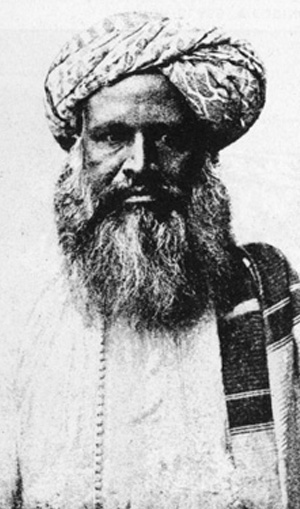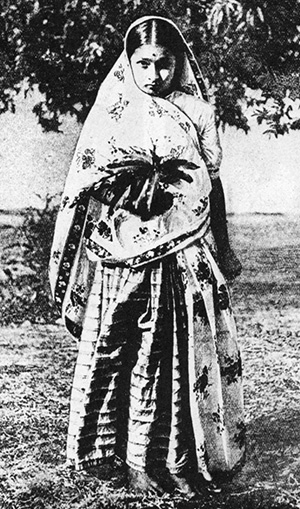Cutchi-Swahili
Language: Cutchi-Swahili. Alternate names: Asian Swahili. However, Cutchi-Swahili and Asian Swahili may not be the same.
The language is mostly used by Asians communicating with non-English speaking Africans and other Asians who share no other common language. It is the L1 (first language or mother tongue) of some Gujarati Muslims who have come from Zanzibar.
Language family: Creole, Swahili based.
Origins of the community: The Kutchi people traditionally reside in the Kutch region of the north-western Indian state of Gujarat and in Sindh Province of Pakistan. These days most Kutchis live in India, Pakistan, South Africa, Kenya, Tanzania, Canada, the United States, Uganda and UK. They also speak closely-related languages such as Gujarati, Sindhi and Memoni. The Kutchi who immigrated to the Africa Region have got Swahili and those who settled into the UK have some English phrases in the language.
The largest number of Cutchi speakers in Kenya are either those known as Cutchi Sunnis, or Memons or the Patels. The first Memons were reported in Mombasa in 1850. In 1880, Memon merchants and Cutchi Sunni artisans built a mosque in Mombasa.
Population: According to SIL Ethnologue the population count for the Cutchi-Swahili speakers stood at 46,000 in Kenya in 2000.
Gujarati
Language: Gujarati. Alternate names: Gujerathi, Gujerati, Gujrathi, spoken by immigrants from Gujarat, India.
Language family: Indo-European, Indo-Iranian, Indo-Aryan, Central zone, Gujarati.
Origins of the community: Gujarati are an ethnic group that is traditionally Gujarati-speaking and can trace their ancestry to the state of Gujarat in western India.
Hindus trace their origin to the Sanskrit-speaking Aryans who came from the steppes of Central Asia into the Punjab bringing with them their nature gods. Collections of prayers and hymns known as Vedas became their holiest books. The original Aryan social system later solidified into a structure of castes of which there are three main ones: Brahmins (priests), Kshatriya (warriors) and Vaishya (farmers, traders, artisans). Less skilled people and common labourers were not counted worthy of a caste, hence were outcastes. Thus a Hindu’s work was determined by his birth and occupation became an inheritance.”
Population: There are about 65.5 million speakers of Gujarati worldwide, making it the 26th most spoken native language in the world.
Geographical location of the community: After their last migration, the immigrants to Kenya from Gujarat, India, settled mostly in Nairobi.
Gujarati is native to the Indian state of Gujarat, and is its chief language, as well as of the adjacent union territories of Daman and Diu and Dadra and Nagar Haveli.
Cycles of life
Marriage: Most marriages in Gujarati societies are arranged. For the Hindu Gujarati, caste and social rank are very important considerations. The Muslim Gujarati are only allowed to marry from certain groups. Marriage is considered to be an alliance between two families, not just two individuals.
Kachchi
Language: Kachchi. Alternate names: Cutch, Cutchi, Kacchi, Katchi, spoken by immigrants from Kutch region of the Indian state of Gujarat as well as in Sindh. The Cutch who have emigrated are usually from the higher, wealthier castes and have maintained several aspects of their own culture. In Kenya and Tanzania, Kachchi is only spoken at home. The Cutch in Kenya are often bi- or trilingual, speaking either English and/or Swahili as well as Kachchi.
Language family: Indo-European, Indo-Iranian, Indo-Aryan, Northwestern zone, Sindhi.
Population: They make up 70% of Kenyan Asians.
Geographical location of the community: After their last migration, immigrants to Kenya from Kutch region of the Indian state of Gujarat as well as in Sindh settled in Nairobi, Mombasa and along the main trade routes in Kenya.
Konkani-Goan
Language: Konkani, Goan. Alternate names: Goan, “Goanese”, Gomataki, Konknni.
Konkani is an Indo-Aryan language belonging to the Indo-European family of languages and is spoken on the western coast of India. It is one of the official languages of India and is the official language of the Indian state of Goa.
In Kenya, Konkani is used by many Asians whose ancestors came from Goa or north India.
Language family: Indo-European, Indo-Iranian, Indo-Aryan, Southern zone, Konkani.
Origins of the community: The history of Goans in Kenya is recorded as far back as 1865 with the arrival and establishment of businesses in Zanzibar and Mombasa by CR and MR de Souza. Goans had trickled down into East Africa at the time of the Portuguese settlement at the East African Coast; but at the turn of the 20th century there was a greater influx. They arrived as sailors, cooks, tailors, railway employees and clerks. They also came during the construction of the Uganda Railway and stayed on as civil servants under the British administration. They established Goan institutes such as the Goan Institute Mombasa in 1901, Goan Institute Nairobi in 1905, and the Goan Gymkhana in 1936.
In the latter half of the 19th century, Goans had adopted English as a language of school instruction. English soon became the mother tongue of many educated Goan families. In Bombay, the British began employing English-speaking Goans in a variety of clerical capacities towards the end of the 19th century. When the newly formed Imperial British East Africa company (IBEAC) turned to Bombay to recruit staff in the 1890s they found Goans both qualified and willing to come out to Kenya. In the short period of operation the IBEAC employed a number of Goans in various clerical capacities. When the company surrendered its charter in 1895, and the British established a Protectorate government over Kenya, the new administration retained most of the IBEAC’s employees, Goan and others. The policy of employing Goans continued as the administration expanded and as work on the Railway proceeded, so by 1905 there were about 200 Goans in the new capital, Nairobi.
Geographical location of the community: After their last migration, immigrants to Kenya from the Indian state of Goa settled in Nairobi.
Panjabi
Language: Panjabi, Eastern. Alternate names: Gurmukhi, Gurumukhi, Punjabi, spoken by the Punjabi. The term Punjabi describes both an inhabitant of the Punjab region (in India and Pakistan) and a speaker of the area’s major language. The Sikhs represent 70% of the Kenyan Punjabi. A substantial number of the Punjabi in Kenya are Hindus who rigorously follow the social and economic caste system common in the Punjab region of India. Their social and economic status is based first on caste, then clan, village, division, and family.

Indian man
Eastern Punjabi language is native to the inhabitants of the historical Punjab region (north-western India and in Pakistan). For Sikhs, the Punjabi language stands as the official language in which all ceremonies take place.
Language family: Indo-European, Indo-Iranian, Indo-Aryan, Central zone, Panjabi.
Origins of the community: The Punjabi-speaking Asians of Kenya include Muslims, Orthodox Hindus, Ahmadiyyas and Sikhs. Most of them came to Kenya in connection with the building of the railway at the turn of the 20th century. The Muslims were the last of the major Sunni Muslim to arrive in Kenya. They and some Sikhs were brought by the British as military protection for the railway.
Population: According to SIL Ethnologue the population count of the Punjabi in Kenya stood at 10,000 in 1995 and showed an increasing trend. Population total all countries: 28,163,600.
Punjabi is also spoken as a minority language in several other countries where Punjabis have emigrated in large numbers, such as the United States, Australia, the United Kingdom, and Canada. In Kenya, the population of Punjabi native speakers stands at 55,000.
Geographical location of the community : After the last migration, the Punjabi immigrants to Kenya from the Punjab region in India and Pakistan settled in Nairobi.
Although most Punjabi live in India and Pakistan, emigrating Punjabi have established substantial communities in about twenty-six other countries. While living conditions differ greatly from country to country, the Punjabi (who may be Muslim, Hindu or Sikh) retain much of their traditional culture and lifestyle.
Cycles of life
Marriage: Marriage is an important institution among all Punjabi religious groups. Traditionally, the bride lives with her husband in his village and house. However, in Kenya as in most communities outside India and Pakistan, newly married couples set up their own homes. Parents sometimes still may arrange marriages, but this is rarely done without consulting those involved.
Marriage ceremonies differ by caste and religion. Generally, they are symbolic of the ideal that a marriage is a free gift from the bride’s family to the groom, with nothing taken back in exchange. The bride’s family usually pays all the wedding expenses, and often provides substantial gifts (a dowry) for her to take to her new home.


